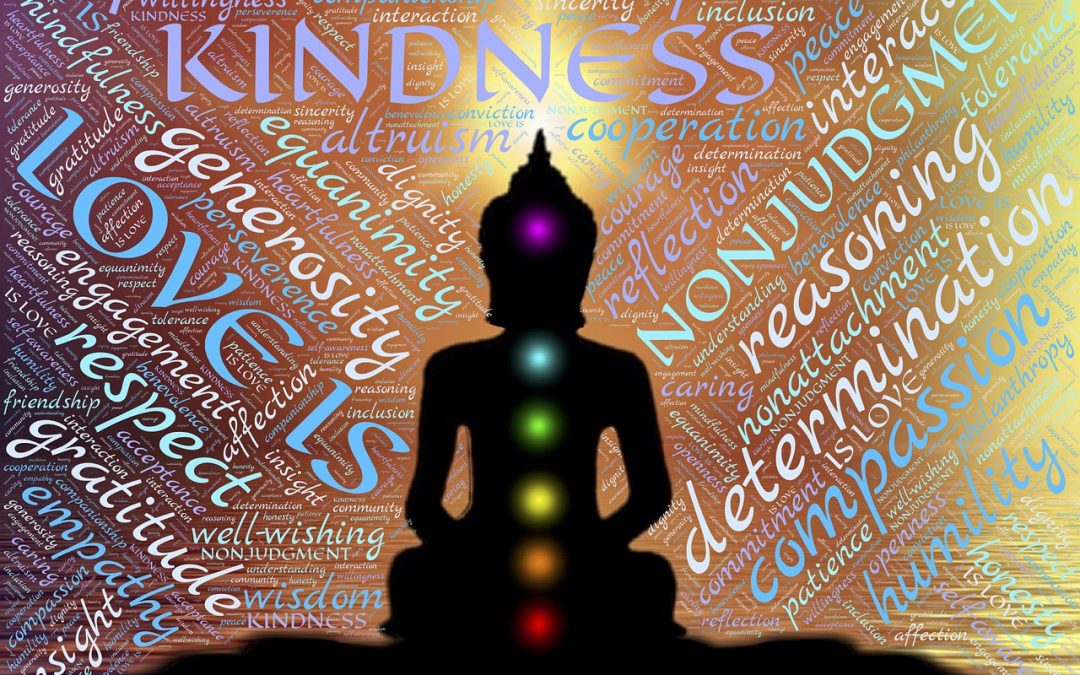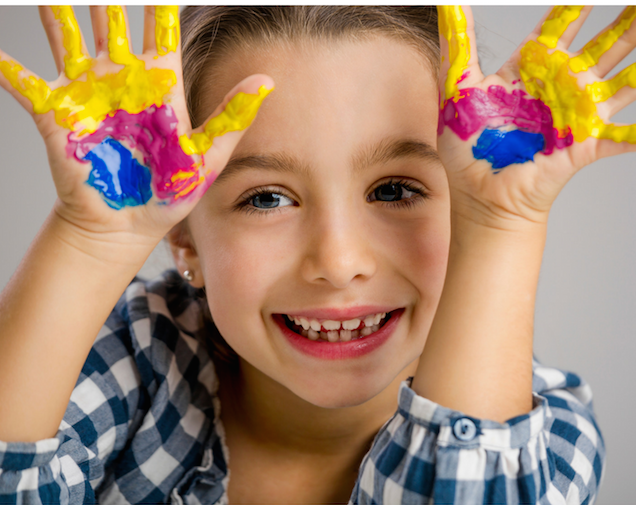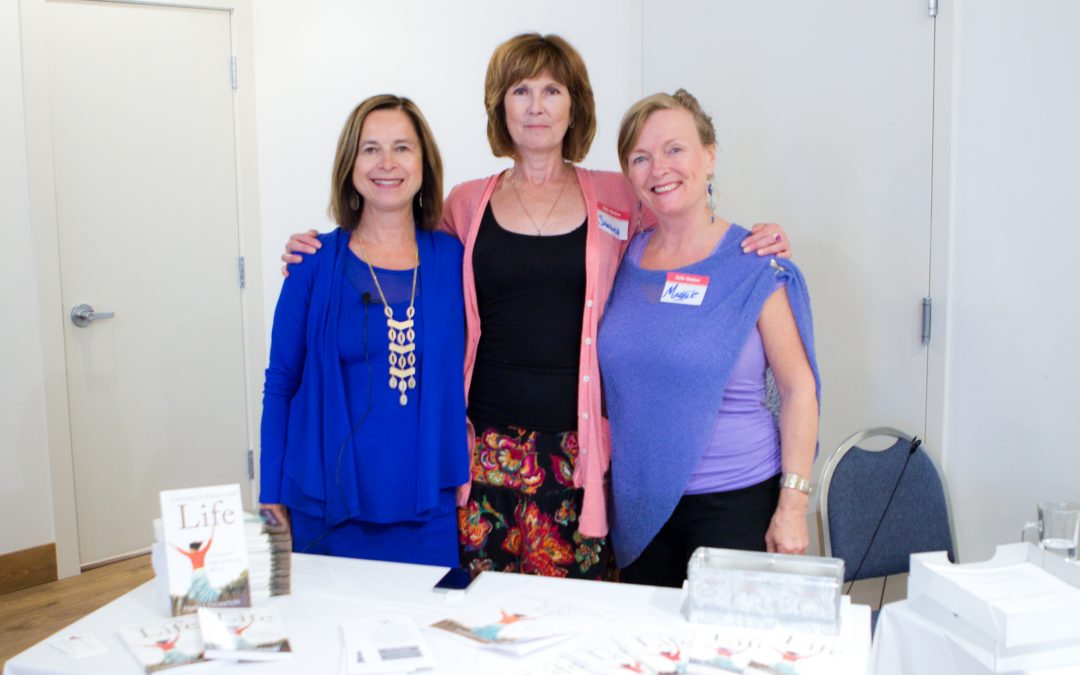
by PT-clc | Apr 24, 2018 | Conscious Living, Coping with Change, Dealing with Anxiety, Health & Wellbeing, Self-Care
Often when we’re facing a life change; it could be a job loss, retirement, separation, a health challenge; we feel anxious. Our heart begins to race and we feel like we want to run away from the situation. It is difficult to focus and often times we want to go back to the way things were. We feel overwhelmed by all that lies ahead of us, and are uncertain about our future.
When this happens, what can you do to get out of this cycle of anxiety?
Here are some proven strategies:
- Take slow deep breaths in through your nose and out through your mouth, keeping your mouth open and releasing sound when you exhale. Repeat this about five times and notice how you feel. This exercise releases oxytocin, the hormone that relaxes and calms us. When you have taken a few slow, deep, conscious breaths, you should begin to feel more relaxed.
- Do body scanning on awakening and/or before going to sleep. Lie in bed and scan your body slowly from the top of your head to the tips of your toes. While doing this notice any tension or pain. If you do, breathe into that area and set the intention to release the tension or pain.
- Spend regular time in nature. Find a special place you feel connected to. For me there is a place on the rocks by the ocean close to where I live. When I go there and lie on the rocks, I feel so grounded, relaxed and protected. Did you know that the Japanese have done longitudinal studies to show that when we walk among trees it reduces our heart rate, reduces our blood pressure and increases the number of natural killer cells our bodies produce?
- Do mindfulness walking meditations starting with three times a week for 20 to 30 minutes each time. When you do this, instead of going for a walk and thinking about all that has happened or all you have to do, instead focus on your senses. Notice the wind on your face, the smell of the salt sea air, the crunch of leaves underfoot, the sound of the birds, the beautiful vistas that surround you. When thoughts come into your head, which they inevitably will do, imagine they are clouds and let them float by or imagine putting them in a bubble and seeing them float away, and refocus on your senses.
- Repeat to yourself several times each day, “I am safe, it’s only change. “ (a favourite of mine from Louise Hay) Post this affirmation where you will see it, e.g. on the bathroom mirror, on the refrigerator door.
- Move your body. Put on some music you enjoy and dance around your kitchen or wherever. Feel the music and let it flow through you.
- Tap into and express your creative side. Do something creative that you enjoy. Perhaps it’s painting, drawing, playing the piano, gardening. It could be something you did as a child that you no longer do or something you’ve always wanted to try. When you tap into and express your creative side, you feel like a child at play, lighter and filled with wonder. This opens you up to exploring the positive side of the change you are experiencing, and to the belief that change is a creative process that opens us up to new possibilities.
I’d love to hear from you some strategies you’ve found helpful to reduce the anxiety associated with change. Feel free to post your comments below and to share this article with others.

by PT-clc | Feb 13, 2018 | Health & Wellbeing, Self-Care, Stress Management
I’ve come to believe that if I don’t truly love myself and treat myself with kindness, I’m unable to have a happy, fulfilling and healthy relationship with someone else.
February is celebrated as the month of love in many countries around the world. It’s often thought of in the context of romantic love. That said, this month has got me thinking about self-love and being kind to myself. I believe in the saying If you aren’t good to yourself, no one else will be.
We often give so much to others that there is little left for ourselves and we feel depleted, exhausted and at times resentful. We think that if we say “No” that others won’t like us or we’ll be letting them down. I know for sure that when you set healthy boundaries, people sense and respect them and still love you, perhaps even more.
So What does being kind to yourself look and feel like for you?
For me it looks like:
- Taking time each day to do something special for me
- Meditating each morning.
- Doing yoga 3 times a week or more
- Walking in nature once a week or more
- Booking trips and making time to visit my grandchildren every quarter
- Truly being present with family and friends when I am with them
- In yoga class, listening to my body and not pushing myself when I feel low in energy
- Taking time to breathe and “smell the roses’ instead of constantly thinking about my “to-do” list
- Listening to music I love
- Letting my inner child come out to play regularly – through dancing around my kitchen, finger painting without a picture in mind, swimming, kayaking, hiking, cycling
- When my inner critic begins to chatter in my head, saying a loud NO to it and stating “I’m not listening to you any more” and then reframing the negative chatter into a positive statement and saying it aloud
- Treating myself to a massage
- Treating myself to a pedicure
When I’m kind to myself I feel:
- Relaxed
- Playful
- Fully present
- At ease
- Free of negative chatter
- Grateful
- Creative
- In “the flow”
- Fun to be around
- Inspired
I invite you to answer this question and notice what flows out of you. I challenge you to begin every morning thinking about and choosing at least one way you wish to be kind to yourself that day. During the day notice how you feel when you are doing so, and also how others respond to you. Continue doing this each day for three weeks and notice what difference it makes in your life.
What I know to be true is that when we’re kind to ourselves magical things happen!
I’d love to hear from you and what you do to be kind to yourself, as well as what you notice when you intentionally do this. Please share your comments below and feel free to forward this post to others.

by PT-clc | Jan 23, 2018 | Creative Living, Creativity, Health & Wellbeing, Self-Care, Stress Management, Women in Business
With all the gloom, doom and uncertainty in the world, it’s more important than ever for us to “let go” of our worries and to connect with our inner child. What do I mean by “connecting with your inner child”?
Imagine what it was like when you had no cares or worries, when you felt loved, safe and secure and lived each day from a place of childlike wonder. I invite you to take yourself back to that time and place. What do you see and how do you feel?
I see myself playing with friends in nature; pretending we are pirates and digging for gold in the farmer’s field close to where I grew up. I see myself swinging so high and then jumping off a swing. I see myself running, jumping and feeling so free. I see myself swimming at the family cottage, back and forth between the docks. When I imagine doing each of those activities I feel light, carefree, empowered, creative, energized and curious.
So how can you connect with your inner child and with those feelings you felt as a child? One clue is when I play with my grandchildren. I now have 4, three years of age and under! On a recent visit I went for a walk with my 21- month old granddaughter. It was her first winter of experiencing snow and what it was like to walk in the cold. Initially she had a bit of trouble walking all bundled up in her cumbersome snowsuit. Before long she was almost running, so excited to be outdoors. I drew pictures in the snow and she kept saying “more, more.” I showed her how to blow snow off her mittens as it was too dry to make a snowman. I helped her make an angel in the snow. I tried to put myself in her shoes and see through her eyes of childlike wonder. It was so fun and energizing!
Another activity that connected me with my inner child was in the acrylic painting class I recently started. In the class the instructor encouraged us to try finger painting and to free paint without trying to paint anything special. It was an incredibly liberating experience! For several days after, I felt so connected to my creative side, easily designing a workshop and doing some writing. I felt like I was “in the flow”. My mind was clear and focused.
I really enjoy being in, on or by water. When I’m feeling stressed I find it therapeutic to walk to the ocean (which is close by) and lie on the rocks. When I do this I feel grounded and supported by Mother Earth. My worries fall away and I relax and feel embraced by this sacred space.
Here are a few suggestions of how you may connect with your inner child.
- Try finger painting with no agenda and notice how it makes you feel
- Is there a special nature place close to where you live? Visit it regularly. Bask in its beauty and notice how being there makes you feel
- Spend time with young children; notice and try to reconnect with your childlike wonder
- Spend some time at least once a week imagining a time or times when you felt loved and supported with no worries or cares. Feel those feelings and recall what you were doing at that time. Perhaps begin integrating those activities into your life. It could be a regular hike, walk, drawing …
- Create a sacred space in your home; a place for you that is comfortable and contains a few special reminders of your childhood; e.g. rocks, shells … . Commit to spending time in that space initially for 10 to 15 minutes three times a week and notice how you feel when there and the cumulative effect.
I believe that if we all took the time to reconnect with our inner child and let her or him “come out to play” on a regular basis, that there would be less conflict, less stress, more creativity and more collaboration in our lives, communities and workplaces.
I’d love to hear how you connect with your inner child and what you’ve noticed from that experience. Please share your experiences below so we can all learn and grow from each other.
If you’d like to learn more about how to Tap into and Express Your Creative Side I invite you to read chapter 5 in my #1 Best Selling book “Learning to Dance with LIfe” – https://pamela-thompson.com/books/

by PT-clc | Oct 3, 2017 | Change, Coping with Change, Creative Living, Health & Wellbeing
We are hard-wired to perceive change as a threat. Our primitive brain likes to keep us safe and has enabled humans to survive through time. When our amygdala (part of the brain) detects fear, it sends messages to our bodies to go into fight, flight or freeze mode. This explains why some of us become angry as a result of a change being imposed on us, fearful and wanting to run away from a situation rather than face it, or paralyzed and unable to think clearly or to move forward.
So, how can we reduce our fear of change given this biological reality? Norman Doidge in The Brain that Changes Itself provides powerful evidence that our thoughts and perceptions have the power to change the structure of our brains. In other words, if we create new beliefs around change and internalize them, we also create new neural pathways that enable us to respond positively to change rather than view it as a threat. Candace Pert in her landmark book Molecules of Emotion provides strong evidence that our thoughts and emotions affect our bodies.
Given these facts, how can we reduce our fear of change? Here are some proven strategies. We can:
- Understand how we respond to change and why – A simple exercise is to rate yourself on a scale from 1 to 10 related to how you respond to change: “1” being it scares me to death and “10” being I thrive on it. Another way is to spend some time reflecting on the barriers you have towards change and writing them down. A number of barriers to change have been identified in the literature including: becoming paralyzed by fear, procrastinating, blaming others, believing we can’t do something or are not worthy, always focusing on problems rather than solutions, getting stuck in old habits or denying change is happening, and not being willing to put in the effort required to make a change. Ask yourself, What barriers do I have to embracing change in general, and in this particular situation? E.g. changing jobs, leaving an unsatisfying relationship, accepting a new leader in my organization. Notice past patterns in your life.
- Become aware of our beliefs around change – Close your eyes and think about a recent change; one that you didn’t choose but was imposed on you. Examples include: lay-off, separation, relocation. Notice what words come up for you. Write them down. Begin with the stem “Change is”_______ and fill in the blank. Do a brain dump and write down all the words that come up to define what change means to you. Examples are “Change is scary”; “Change is to be avoided at all costs” …
- Try on some new beliefs about change; such as “Change opens me up to new possibilities”, “Embracing change is a creative process”, “Change provides me with an opportunity to learn and grow”. Post one of these positive beliefs where you will see it at least 3 times a day – on your computer, bathroom mirror…and say this belief aloud each time you see it. Do this for 21 to 30 days and observe what you notice.
- Become aware of how we perceive change and replace our negative feelings and emotions with positive and empowering ones. Ariane de Bonvoisin in “The First 30 Days – Your Guide to Making Any Change Easier” identifies six “change demons” and their antidotes. The six change demons are: fear, doubt, blame, guilt, shame and impatience. She explains that the change demons “help us navigate through change by alerting us if we are off course and encouraging us to choose a different emotion to help us get where we want to go.” Being aware of which emotion you are feeling and replacing each one with positive and empowering emotions and antidotes are key to learning from and navigating change and dealing with uncertainty. The six change demons and their antidotes are:
| Change Demon |
Antidote |
| 1) fear |
faith |
| 2) doubt |
surrender (to not knowing) |
| 3) blame |
honesty (taking responsibility for our role in situations) |
| 4) guilt |
forgiveness |
| 5) shame |
honor (your dark or shadow side) |
| 6) impatience |
endurance |
- Introduce small changes into your daily routine. Take a different route to work. Eat something different for breakfast. Walk or cycle to work instead of driving. Do this for a month and observe what you notice. Change is like a muscle. The more change you choose in your life, the more flexible you tend to become.
What change demons are your facing? How do you typically respond to change? What strategies will you begin integrating into your life to reduce your fear of change?
I welcome your comments below. Feel free to share this post with others.

by pam | Jun 21, 2017 | Coping with Change, Creative Living, Health & Wellbeing, Life Transitions
I recently visited the Okanagan for a conference and to reconnect with old friends. It felt so good to spend time in the presence of folks I had gotten to know over the 8 years I had lived near Kelowna. You know how you feel when you haven’t seen or spoken to someone in a while and it seems like only yesterday since you’ve chatted? You pick up easily and effortlessly and feel relaxed, accepted and valued in their presence. Having moved from a place I had lived longer than anywhere since I left home at 18, I realize that I had started to put down roots. Do you relate? Moving to a new city within the past year, I so miss the deep connections I have with old friends.
So what is connection and why is it so important?
Brene Brown defines connection as “… the energy that exists between people when they feel seen, heard and valued; when they can give and receive without judgment; and when they derive sustenance and strength from the relationship.”
A growing body of research shows that our learning, health and wellbeing are profoundly shaped by our social environments and connections with others.
Matthew Lieberman in his book Social: Why Our Brains Are Wired to Connect makes a strong case that the human need to connect with others is as basic as our need for food, shelter and water. Lieberman draws on findings from his own research and others to demonstrate that “being socially connected is our brain’s life long passion; … (and) “he argues that the need to reach out and connect with others is a primary driver behind our behavior.” We are wired to try to understand others and connect with them.
A strong body of research shows that social support, which includes emotional connection with “… a trusted group or valued individual, has been shown to reduce the psychological and physiological consequences of stress, and may enhance immune function. Social networks, whether formal (such as a church or social club) or informal (meeting with friends) provide a sense of belonging, security, and community.”[1]
Rita Pierson, an educator for 40 years, makes the case in a humorous and brilliant TED Talk[2], that a positive relationship and connection between teacher and student is important for learning to occur. It’s not just about “pouring information into children’s heads”.
Knowing these facts about the value and importance of human connection has amazing implications on the way we facilitate learning in schools, collaboration and productivity in workplaces, and a sense of harmony, security and belonging in communities.
Reflecting on your life so far, can you identify educators, peers, bosses and friends who have strongly influenced your life in positive ways? What characteristics did they possess, and what positive impacts did they have on you, your health and wellbeing, learning, and/or sense of security and belonging?
I welcome your shares and comments below. Feel free to share this post with others.
[1] https://www.takingcharge.csh.umn.edu/social-support
[2] https://www.ted.com/talks/rita_pierson_every_kid_needs_a_champion

by pam | Apr 1, 2014 | Conscious Living, Entrepreneurship, Health & Wellbeing, High Achieving Women, Uncategorized

For many years my life was all about work. I worked crazy hours, went to bed thinking about work and awoke with work on my mind. I would “hit the ground running”, rather than take time to “ground myself” and quiet my busy mind. In interactions with others, I was often thinking of the next thing on my “to do” list, rather than being totally present with the conversation. I was like a “spinning top” always “doing” and rarely “being”.
I typically took work home on weekends when I had a “real” job; and worked night and day when starting my consulting businesses and later my coaching business. I would finish one project, check it off the list and “get on” with the next one, rarely taking time to bask in the joy of my accomplishments.
Reflecting on those days, the birth of my two children were likely my “saving grace”. They “made me” take time off on weekends and some evenings to spend special quality time with them. If I hadn’t had kids, who knows what a “crazy” person I might have become!
Do any of these scenarios ring true for you? At this phase in life, I’m called to reach out to and support driven women who have made work a priority over their own health, their relationships, the rest of their life … . I know from personal experience the toll being a High Achieving Woman can take on your body, mind and relationships at home and at work. I’m called to share strategies that work with women like yourself and to create a global community and platform for women to share their experiences and support one another. I now know that there is more to life than living it “like a spinning top”.
Do you relate to any of the above? Do you have any similar experiences you’d like to share? I welcome your comments in the box below.






